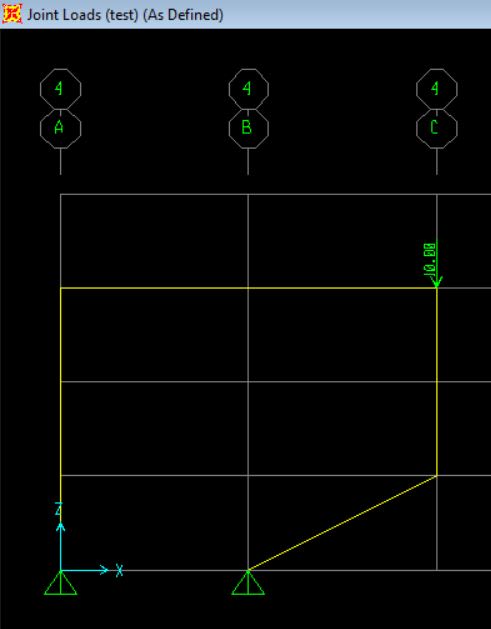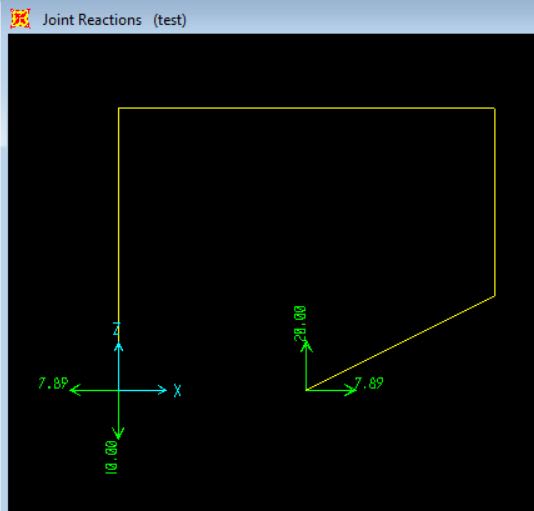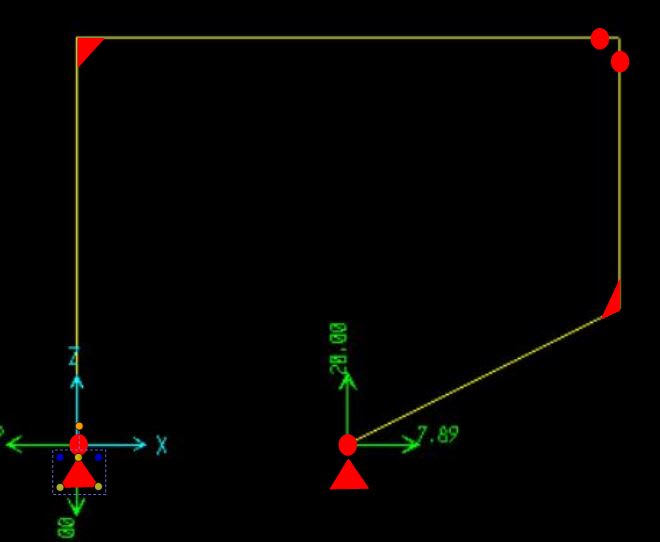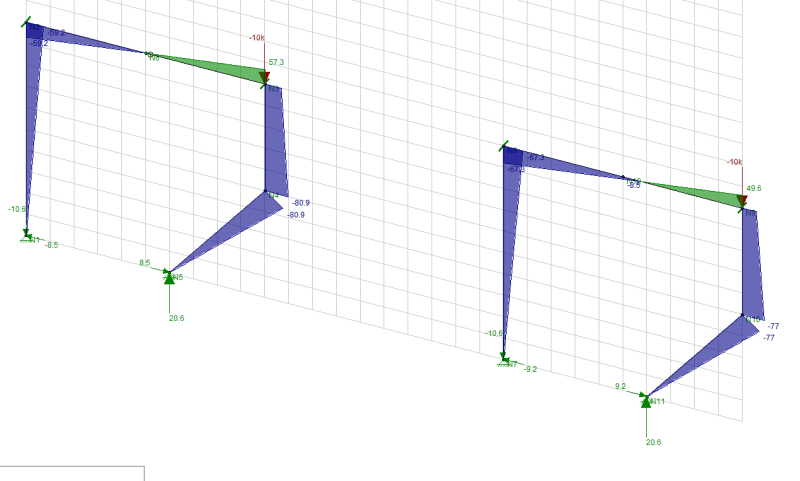Hi All,
I have a simple frame with the following loads and the support conditions.

To solve the reactions manually, it is easy to get the vertical reactions by solving for moments equilibrium at the supports (to equal zero).
What I don;t get is how to solve for the horizontal reactions of 7.89kN at the supports. Am I missing something obvious here or is this not as simple as it looks?
The SAP results are below:

If there is a simple manual hand calculation to find this, could you please show me.
Thanks,
Dimuth
I have a simple frame with the following loads and the support conditions.

To solve the reactions manually, it is easy to get the vertical reactions by solving for moments equilibrium at the supports (to equal zero).
What I don;t get is how to solve for the horizontal reactions of 7.89kN at the supports. Am I missing something obvious here or is this not as simple as it looks?
The SAP results are below:

If there is a simple manual hand calculation to find this, could you please show me.
Thanks,
Dimuth



![[dazed] [dazed] [dazed]](/data/assets/smilies/dazed.gif)